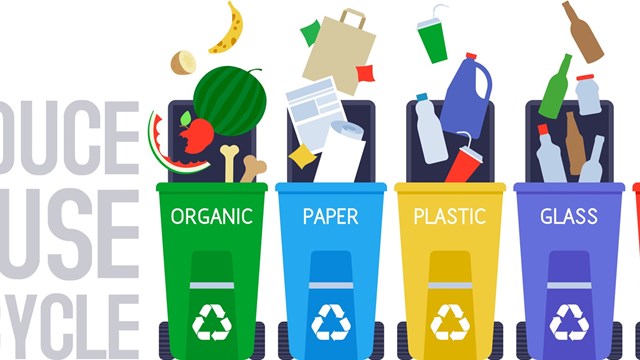
As gasoline prices rise with increasing summer demand, American thoughts focus sharply on the cost of energy and ways to trim fat from their overall energy budgets. Yet for the nation’s nearly sixty million condo dwellers, considering newer energy-saving options can be a tricky proposition at best. While some condos or co-ops move rapidly to adopt the latest green technologies, many associations, still governed by documents drafted decades in the past, may be burdened with legal language that expressly prohibits their communities from making a variety of environmentally-friendly updates.
Has your condo property gone green? And, if not, how green can you go?
“I think what you’re seeing is just the beginning of those types of questions arising for [condo] associations,” says Mitchell Frumkin, president of Kipcon, Inc., a New Jersey-based engineering and consulting firm that provides condo reserve and transition studies. “As we go into the future, and people are looking more at the sustainable options such as solar panels, you’re going to see more of that because it’s affecting the common elements of the community.”
Who Owns That Component?
The problems, experts note, arise from the unique legal aspects of a condo community. In apartment buildings and similar forms of high-density housing, property ownership is clearly defined through the traditional landlord/tenant relationship. Not so with condo properties, and many experienced managers can speak to the unusual ownership questions that sometimes arise.
“Mortgage holders have specific rights,” says New Hampshire attorney Jon Wilkinson, “and for a condominium that wants to make some fairly big changes – whether it’s changing out an HVAC system or installing new utilities that are more energy efficient – that can potentially impact mortgage holder rights.” Wilkinson, a partner in the Portsmouth-based Wilkinson Law Offices, P.C., works frequently with green energy development as well as condominium law. “The problem with condominiums is that ownership is not as clear a concept as in a homeowners association. And when you start having common areas – particularly things like common roof areas or external walls – it’s much more difficult.”
“Generally when [condo boards] replace a piece of equipment or roof or something like that,” says Frumkin, “they don’t really have a problem. They just do it. But when they start changing the common elements by putting solar panels on roofs and things like that, they may run into restrictions based on the governing documents.” (While it is true that some condo documents still expressly prohibit solar panels, this fact is rapidly changing. Nearly all states have addressed solar rights and easements in recent years, and a number of states – including some in New England – have gone so far as to prohibit language that would limit solar panels. Condominium properties have been excluded in some cases.)
Yet despite some remaining prohibitions, many possibilities exist that would have little to no impact on community aesthetics. “I have heard of it happening that a covenant or a condo doc might forbid a photovoltaic array. But that’s not to say that a structure can’t still meet some sort of green criteria,” says Kevin Morrow of the National Association of Home Builders. “As materials wear out, they’re going to need to be replaced. For just about every housing equipment or building material that exists out there, there’s some greener alternative. That alternative could be trading out the carpet in your common areas – changing it for carpet that is doing less off-gassing. When you’re repainting your common areas, shop for paints that have less volatile organic compounds in their vapors.”
While Morrow admits some updates – such as changes to carpet and paint – offer no clear economic benefit, many easily-adopted green technologies will quickly show through on the bottom line. “One that you see a lot of and really goes to help everyone, in the common areas specifically, is opting for more efficient lighting – doing away with incandescent bulbs in favor of fluorescents bulbs or even more-efficient LED lighting. That’s something that you see a lot of buildings going to.” The obvious upside, says Morrow, is a shared decrease in a property’s total energy cost. “If you’re landscaping and you opt for landscaping that is less intensive in the terms of irrigation required, that’s going to obviously decrease the water bill. So there’s an economic benefit as well as an environmental benefit.”
Easy Fixes Abound
But for boards considering more substantial “green” improvements, experts point to many basic structural updates that can be enacted without risking covenant violation. “When you deal with clubhouses and common area buildings, it’s relatively easy for a community that has a clubhouse…to reduce their energy costs in a few ways—by addressing the mechanical equipment [and] by looking at the building envelope,” says Frumkin. “And when I’m talking about the building envelope, I’m talking about the walls, the outside walls, the roof, the foundation, that type of thing. It’s pretty much a proven fact that on any type of building, if you do some relatively inexpensive upgrades to the building envelope, you can generally save in the range of 15 or more percent in energy costs.”
“I think the key to making the decisions about what to do, as with all things, is going to lie in what the goals are. You can make any building more efficient, and frankly, the older a building is, the easier it is to make it operate better,” says Morrow, who serves as senior project manager for NAHB’s Green Buildings division.
Easier still, say experts, in some areas cutting energy costs could be as simple as flipping a switch – by making a switch to deregulated energy. “Massachusetts will be switching to deregulated energy in the next few months,” notes Frumkin. “Connecticut is deregulated. In most instances, when your homeowners change over their energy to a deregulated source, they’re probably going to save between eight and 10 percent on their energy costs. And if the community changes over the energy supply for their common area clubhouses, they can generally save about 15% of their energy costs by just switching to deregulated energy. Talk about low-hanging fruit!”
“The problem,” says Wilkinson, “is that condo associations, in general, don’t like to stick their necks out. One of the challenges with green building and energy efficient components is that there is a whole new wave of products and a lot of great new technology. The challenge is that many of those products have not been time-tested and we still don’t know about many of them in terms of long term reliability and maintenance costs. And as a result, I think condo associations, which are very sensitive to long term capital costs, have not been at the forefront of really trying to implement those types of energy efficient products.”
“I’m not aware of great example in New England where an association has taken very broad steps to implement energy efficiency technology,” Wilkinson notes.
And that, says Kipcon’s Frumkin, is a fundamental mistake. “And I think the big, big mistake associations make is that they don’t do common area upgrades because…you can get unbelievable pricing for capital replacement work by some of the best contractors due to the economic conditions. They’re looking for work.Most of them have been accumulating reserve funds irrespective of the economy, and that money is there to be spent and now is the time to spend it for a number of different reasons – the cost, the quality of the contractors, and the fact that they can significantly help the economy by doing this at this point.”
“For community associations, there are huge opportunities for turning their communities green,” he says. “In my mind, the opportunities for community associations are much more significant than the normal world.”
Matthew Worley is a freelance writer and a frequent contributor to New England Condominium.






Comments
Leave a Comment